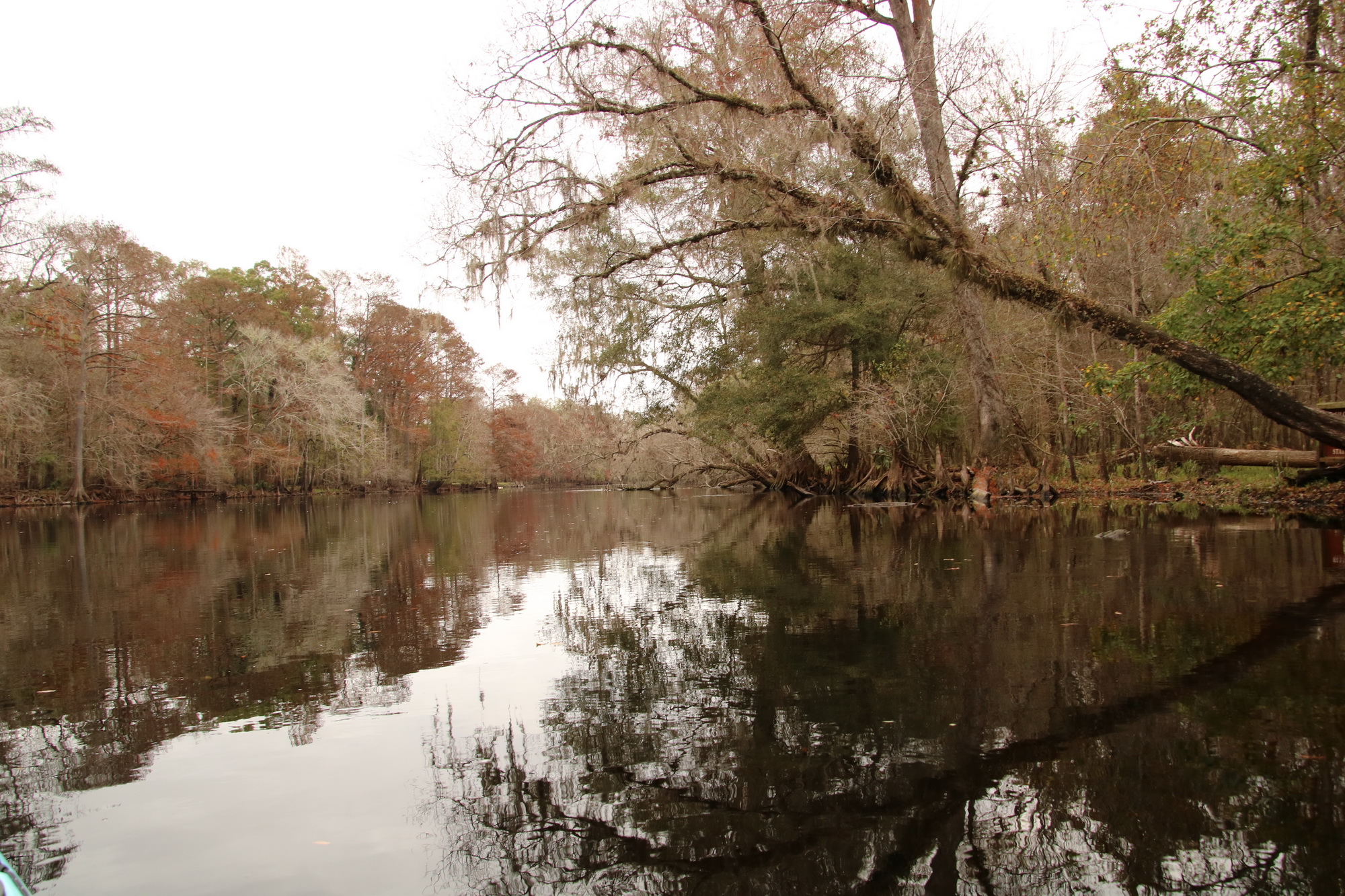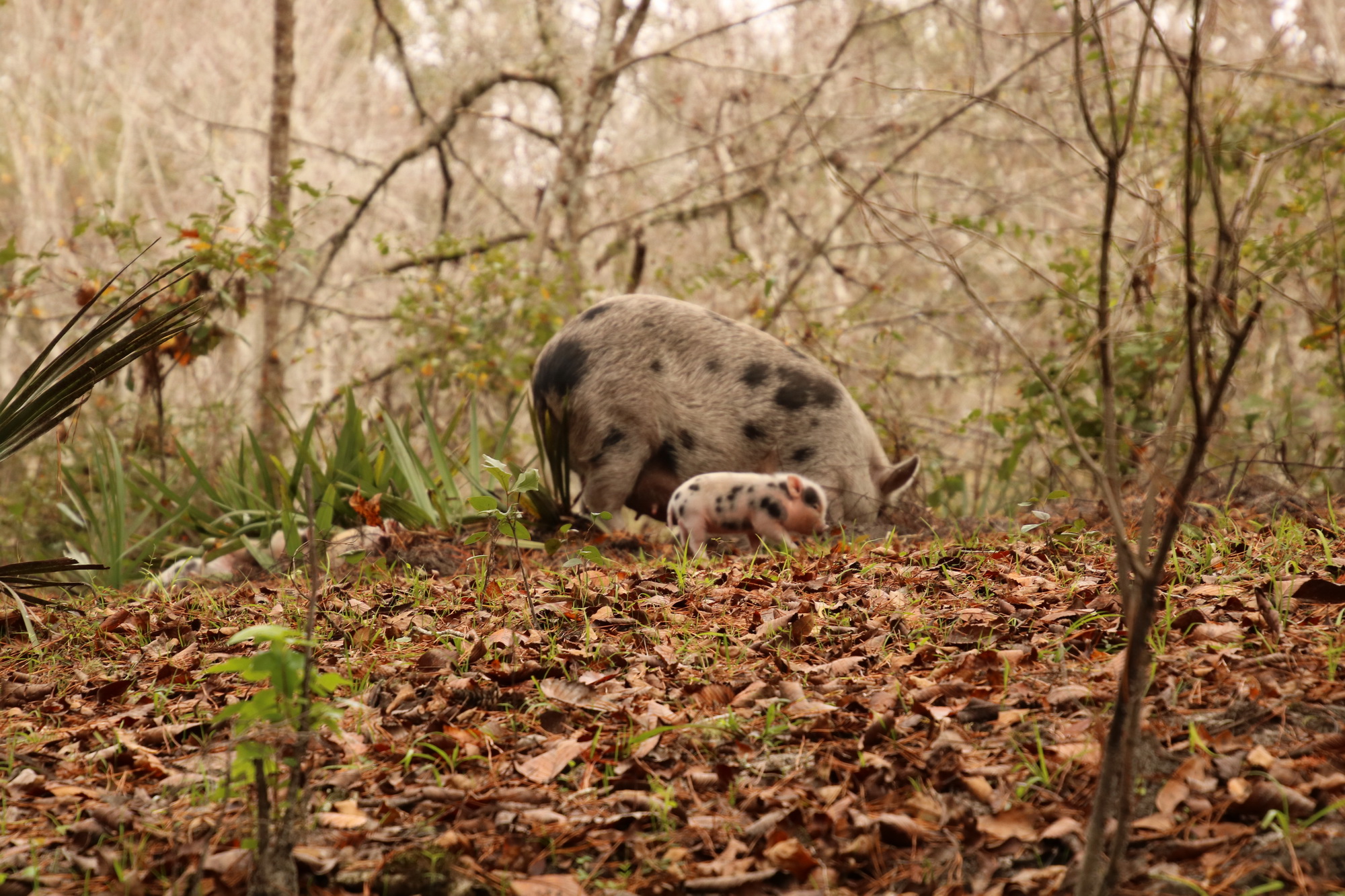
Kayaking on the Santa Fe River
December 12, 2021
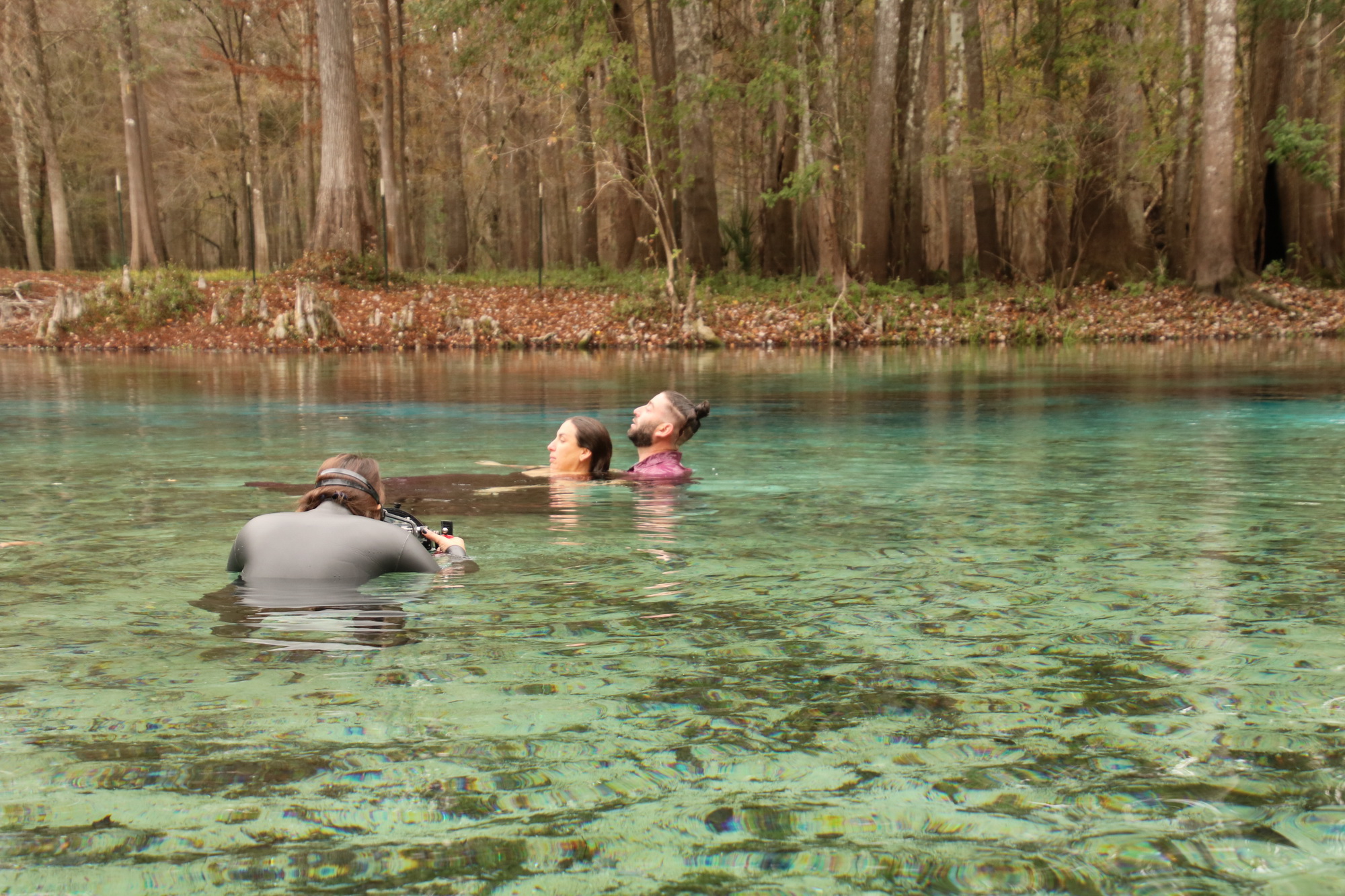
My phone chimed with a text shortly after eight in the morning, it was my brother David saying he would arrive at nine. When I saw him the previous week, I invited him to come out with his kayak for the day while I was at Gilchrist Blue Springs State Park camping. Before David arrived, I took my kayak off the truck and lashed it to a new two wheel carrying cart I had just got. David arrived right at nine and we proceeded down to the spring to launch our kayaks, I walking mine down to the spring some 150 yards my kayak in tow, David driving his car with his kayak on top. Arriving at the spring, we unloaded David’s kayak, carried down to the spring where we found a small group people including an older gentleman standing on the bank, two women in wetsuits who were standing the water with cameras, a third woman dressed in a burgundy evening gown covering her clearly late pregnancy and a young man standing at her side. While David returned to his car to move it to the parking area, the three women and the young man proceeded out into the crystal clear turquoise blue spring where the pregnant woman and young man were poised by the other two women who then begin taking pictures of them in and under the water.
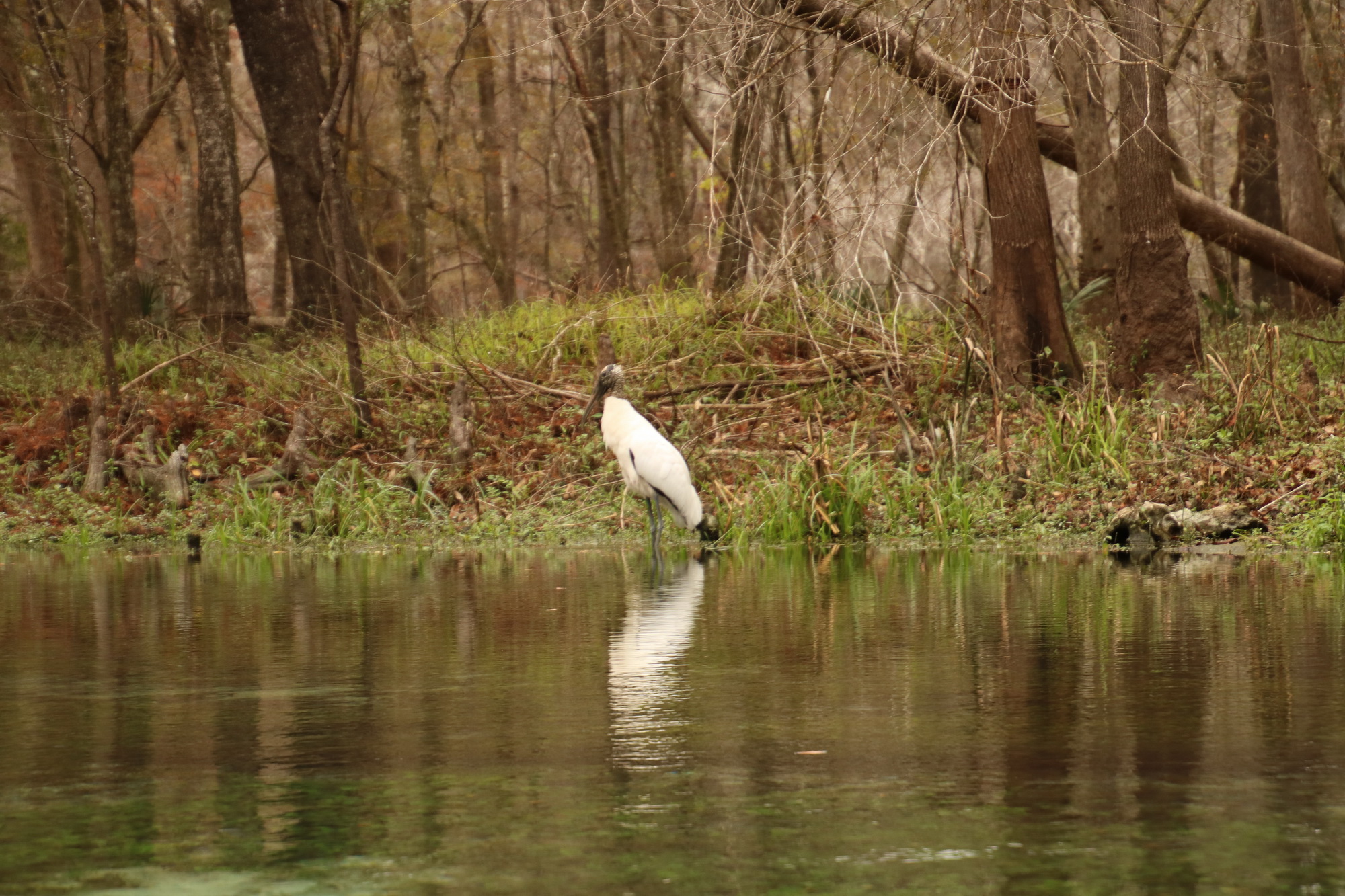
David returned from parking his car and we launched our kayaks and proceeded out into the spring and down the short spring run which leads to the Santa Fe River. We had hardly gone a hundred feet when a great blue heron that was at the edge of the run sprung up into the air, wings spread wide and flew off into the woods while an ancient looking wood stork stood just downstream on the opposite bank and a turtle sat on a dead tree trunk rising out of the crystal-clear water flowing from the spring.
Upon reaching the end of the spring run we turned up stream into a mild but steady current with the river water turning a brown tea color from the tannin in the water from the trees. It was mid-December day in Florida overcast with clouds and a pleasant sixty-five degrees with trees upon its banks reflecting in muted grays, browns and reds on the river. The live oak and hickory trees barren of leaves were draped in gray hanging Spanish moss giving them a ghostly appearance. The leaves of the cypress trees had turned wispy in various shades of muted reds with their ten-foot diameter bases standing in the water with their many knees rising from the water around them. Amongst the cypress, oaks and hickories were an occasional splash of green from a water oak, magnolia or holly tree.
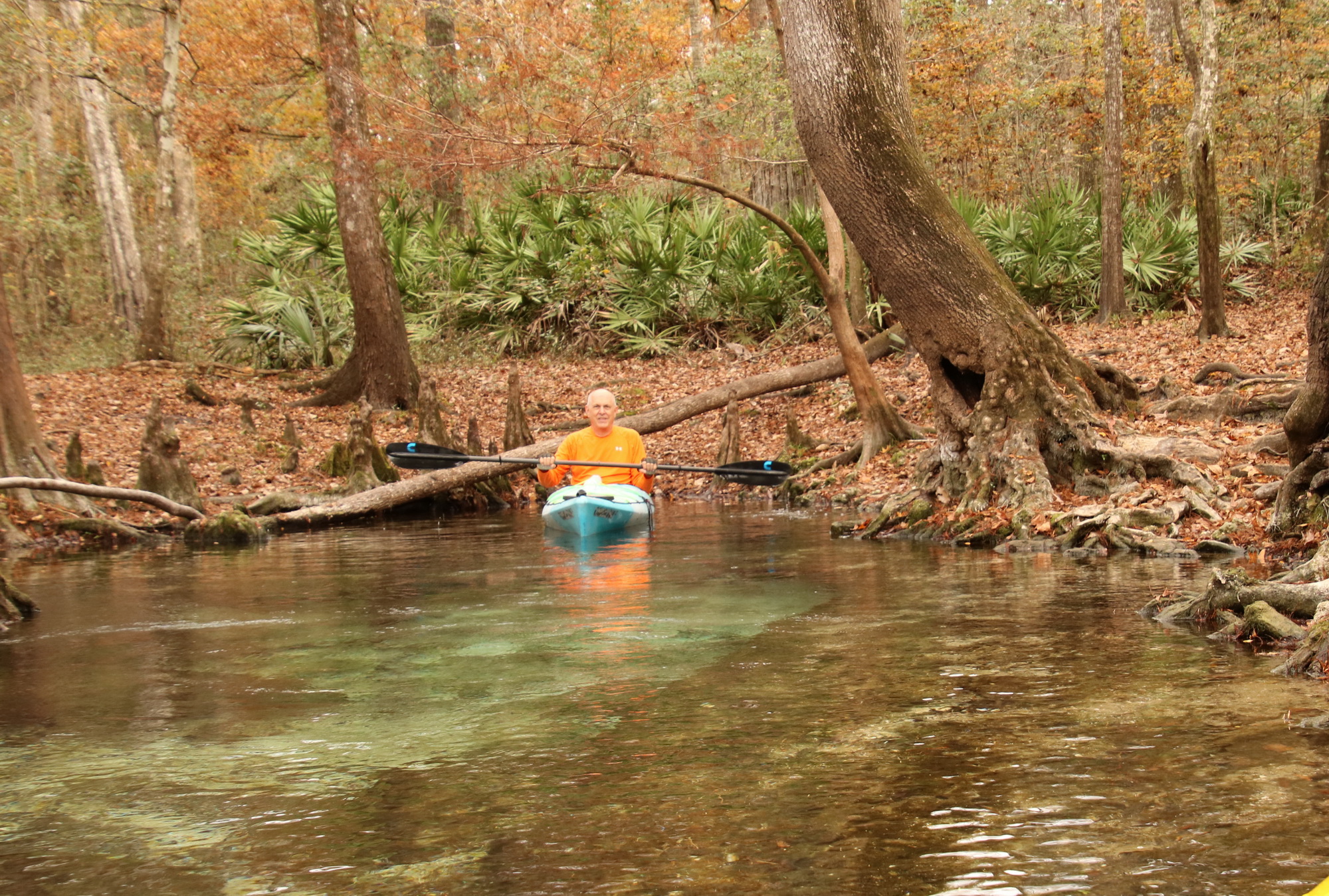
With easy strokes my brother and I paddled up stream with the current being weak enough so that we could paddle a few strokes and the glide for a bit but only a bit as the current would soon start to turn you back down stream. This section of the Santa Fe River is fed by many springs with Blue Springs, where I was camping, being one of the larger springs along with Poe, Ginnie and Ichetucknee Springs with many smaller lessor known springs along the river that are little more than a ten-foot area where crystal clear water gushes forth. A quarter mile upstream we came to Rum Island, and we choose going the north side around island and to return the on the south. Midway around Rum Island is Rum Spring County park with a beautiful blue spring right on the edge of the water that is roped off for swimming only so we proceeded by it rejoining the main river past the island.
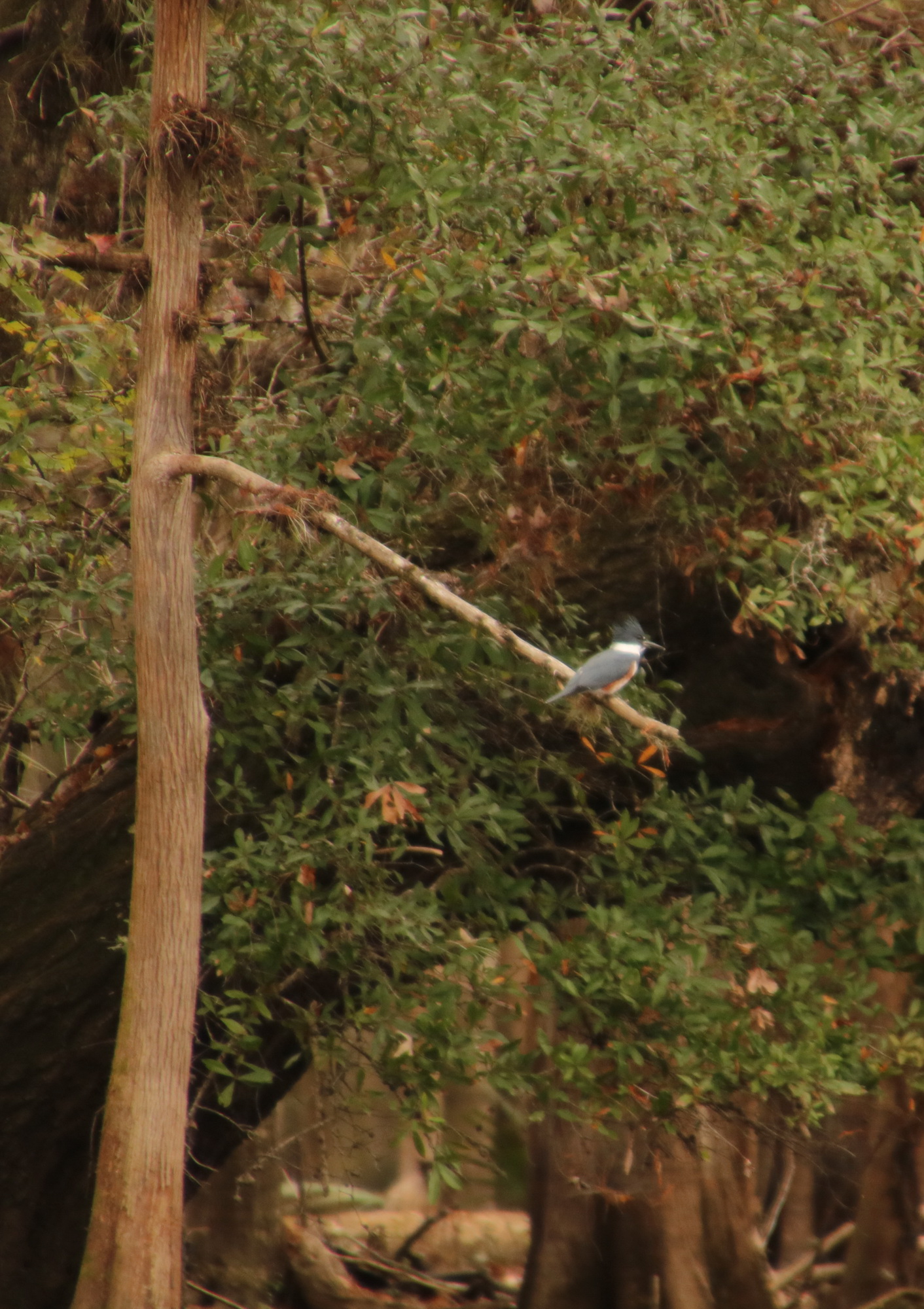
After catching several glimpses of a fluttering in the trees it comes to a stop some twenty yards ahead and I see it is a King Fisher which flew again as we approached stopping some fifty yards downstream which we then repeated several times. I am fascinated how the trees struggled with and against the river and the seasonal and occasional hurricane caused floods. High water marks on the cypress trees tell the story the best where a ring on trees some ten or twelve feet above the current level of the water indicated some past high-water event. While the cypress rises straight and tall, the oaks along the bank reach out over it, some leaning further and further after each flood until their roots are exposed and they are washed down stream to end up as one of the many logs along the shore which the turtles climb up upon.
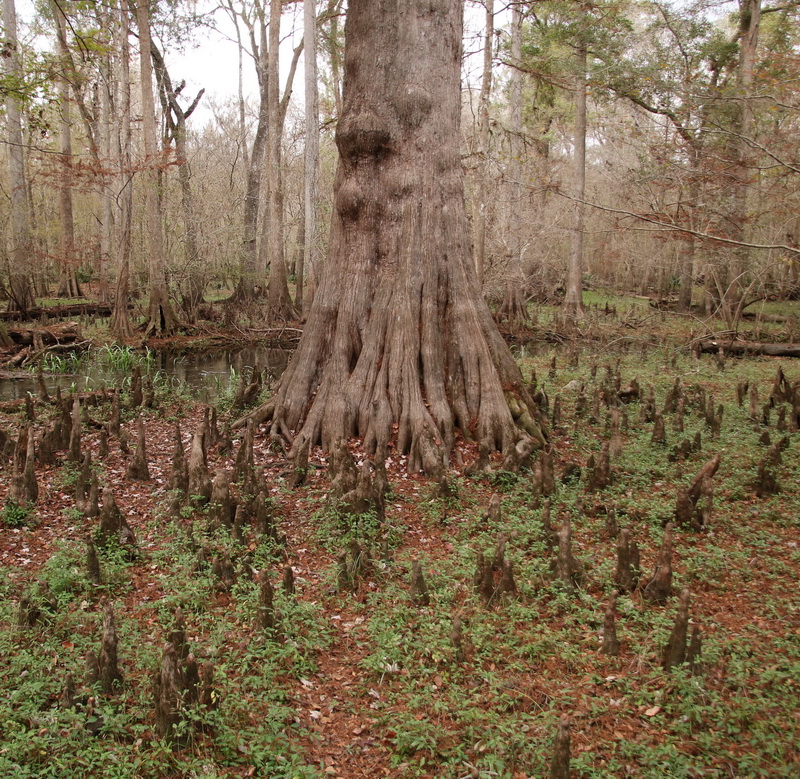 Cypress
Tree Gnomes
Cypress
Tree Gnomes
Cypress trees are particularly well equipped to deal with the river’s moods with their large web base, some being fifteen or twenty feet in diameter, narrowing above flood level to a one or more-foot diameter trunk before rising some sixty or even eighty feet towards the sky. Around the base of the cypress, rising up out of the water are bald top cypress knees one to three feet tall, looking like swamp gnomes with their bald heads gathering around to worship the mother tree. The oaks on the other hand deal with the river in a different way, staying out of the water completely on higher, dryer ground than the cypress, the oaks put down deep roots going down through the earth to the limestone base.
It is an interesting balance with the largest cypress in the water at rivers edge but with smaller trees further from the water’s edge. The oaks on the other hand are largest some dozen yards inland and growing smaller as they get closer to the water with the ones getting to close being washed away. They each can reach the same height and girth each in their own way.
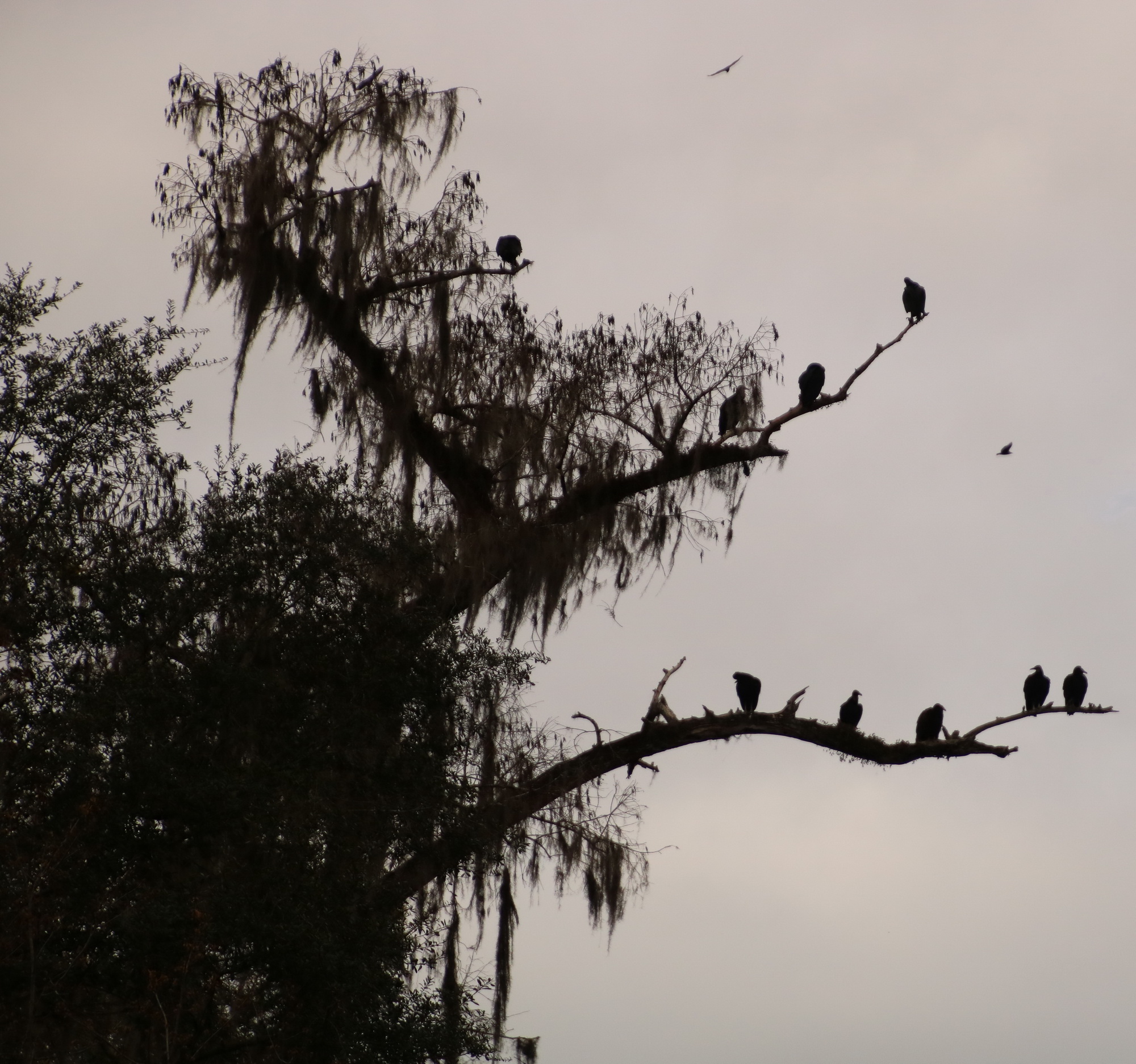
Along the river many vultures can be seen in the morning before the air warms and the thermals takes them to flight circling far overhead. This morning being overcast kept them in their roosts which always seems to be some tall partly or mostly dead tree. The first time I saw this was as a teenager when my father took my brother and I on a three-day canoe trip down the Suwanee River which the Santa Fe merges into. On that trip we paddled around a bend and there in front of us was a gigantic, ghostly-gray dead tree that was full of what my dad called “buzzards” which I knew ate dead animals. We got real quiet as we paddled pass the tree, all the time I was thinking we were going to die and they would all fly down to eat us. This current day my brother and I came across not one, but two such trees, none as large and impressive as the one we saw as boys. Perhaps there is no such massive old trees exist anymore.
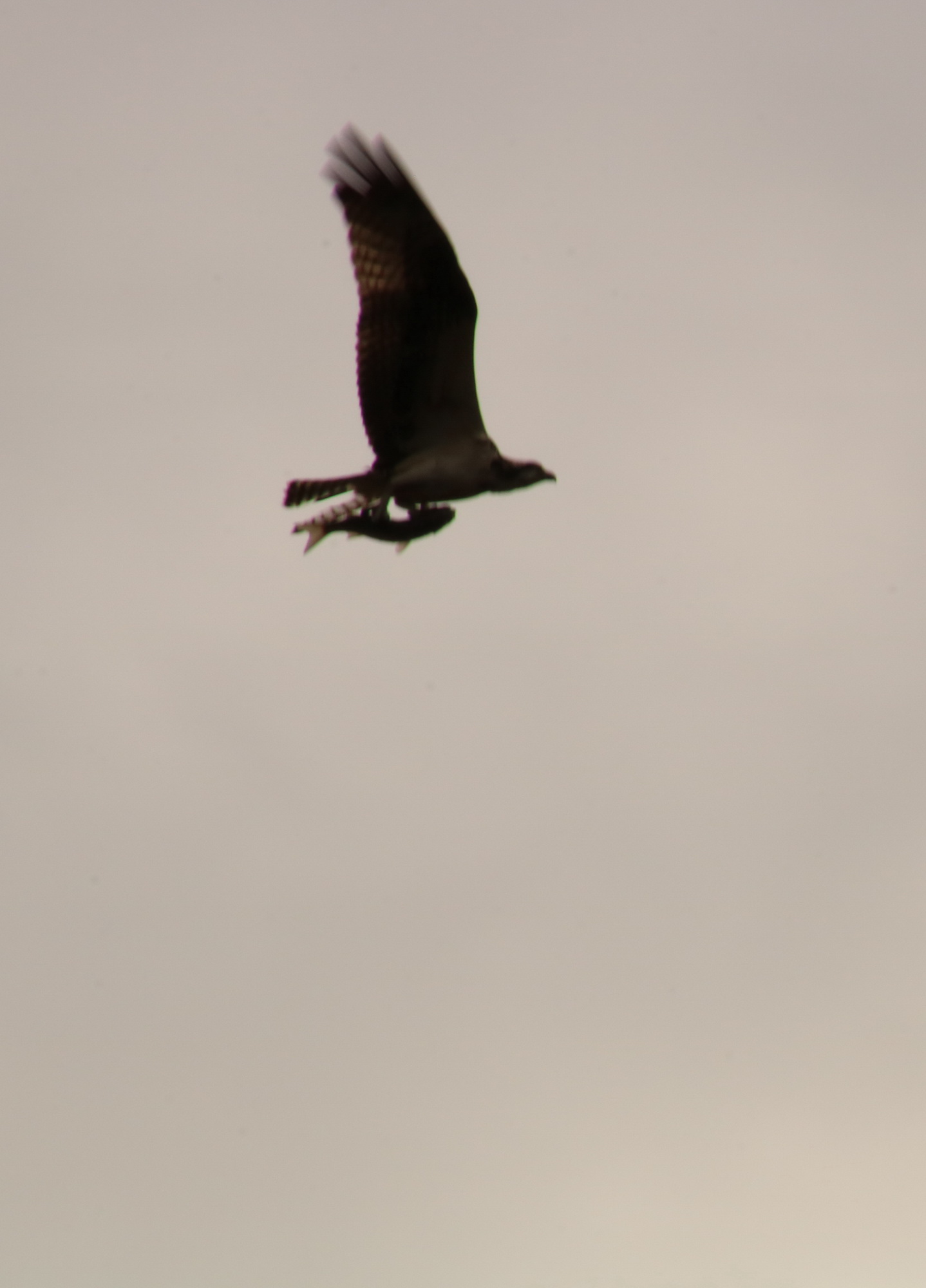
We continued paddling past the buzzard tree when an Osprey sweeps down from a tall tree and across the river in front of us with a foot long fish in its talons followed a few seconds later by a second Osprey. Continuing paddling up-stream, we come to a small side passage which we paddled up to explore a small spring named Pickard Spring some twenty feet from the main river which is a private swimming hole for the people who own the land. The river is not all wilderness for there are a few houses along the way, from large two-story homes with glass fronts to others little more than a shack but all having one thing in common, access to the river, and more than a few rope swings hanging from an overhanging tree limb. Continuing upstream we come to what looks like a small side stream, some fifteen or twenty feet wide and we paddle up a short distance where it makes a right-hand turn and comes to a dead end twenty feet across with a spring coming up in the middle where on the shore, we see a wild pig with six piglets rooting in the earth. As we drew closer, the sow took an interest in us and came to the edge of the bank and looked us over before returning to her piglets.
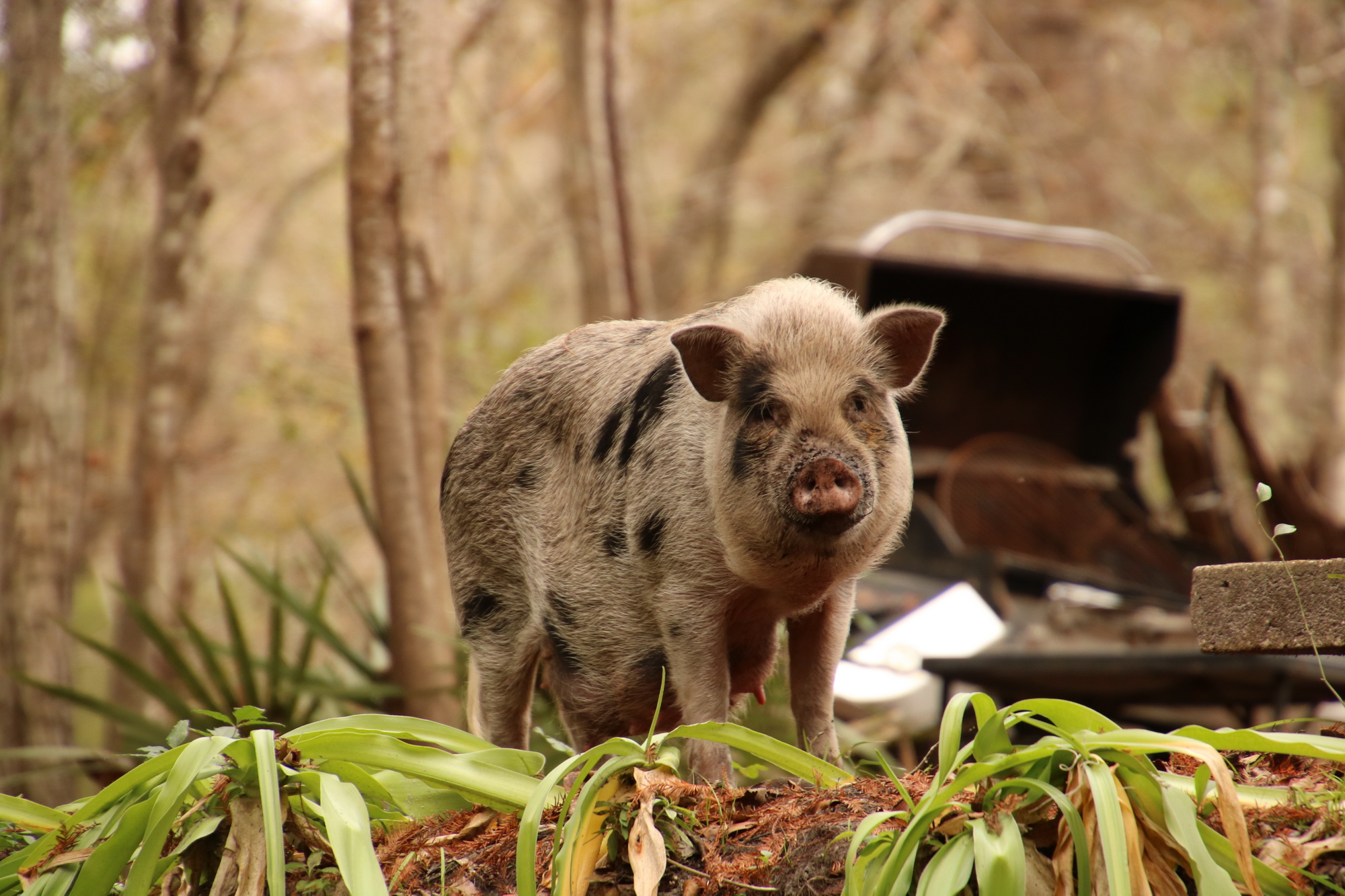
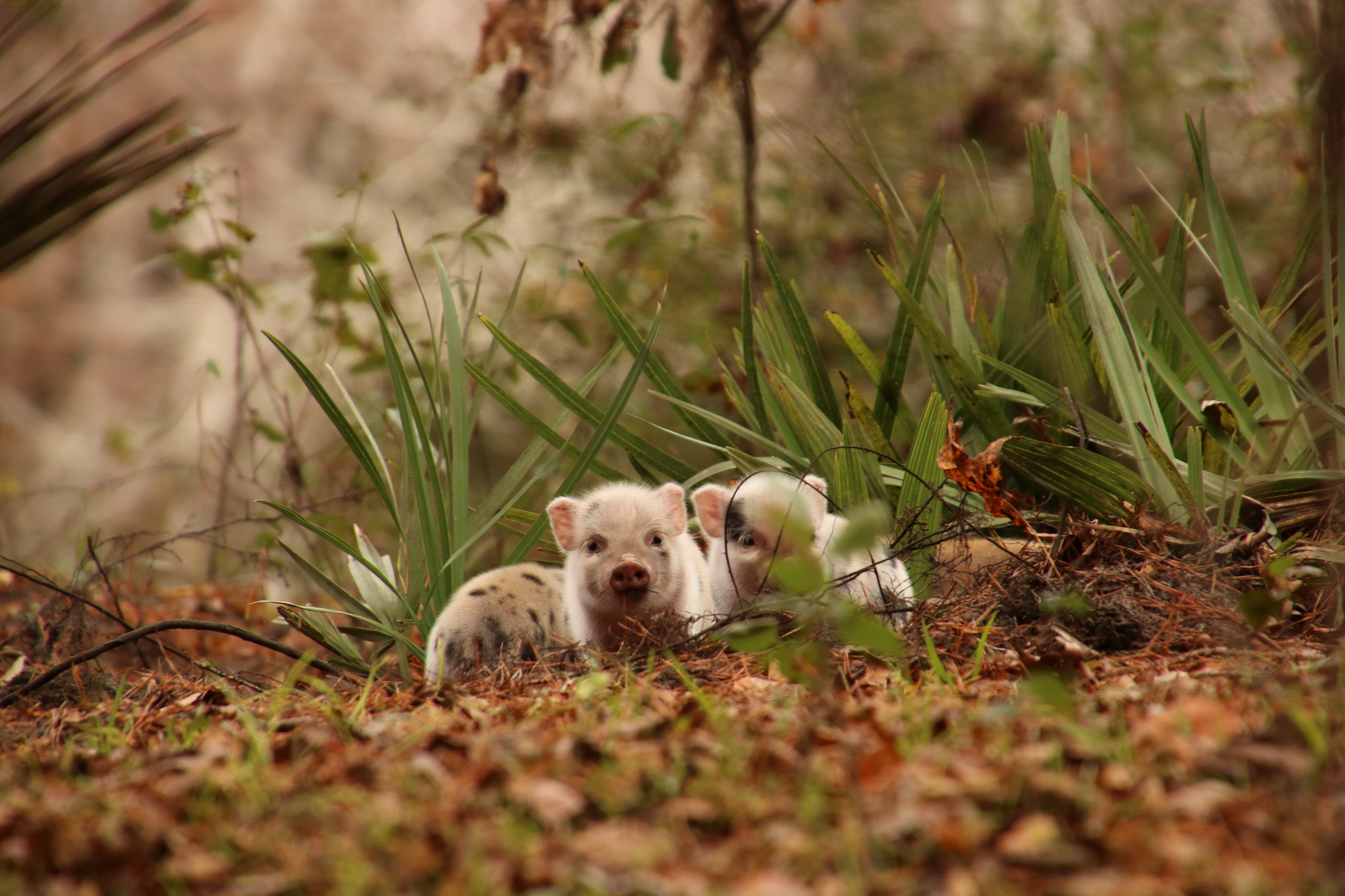
Returning to the river, we
continued paddling up-stream where the river became wide and shallow
causing the current to increase. Tiring at this point we turned around,
short of my goal of reaching Poe Springs, and gently then floated down
stream with only an occasional paddle to keep
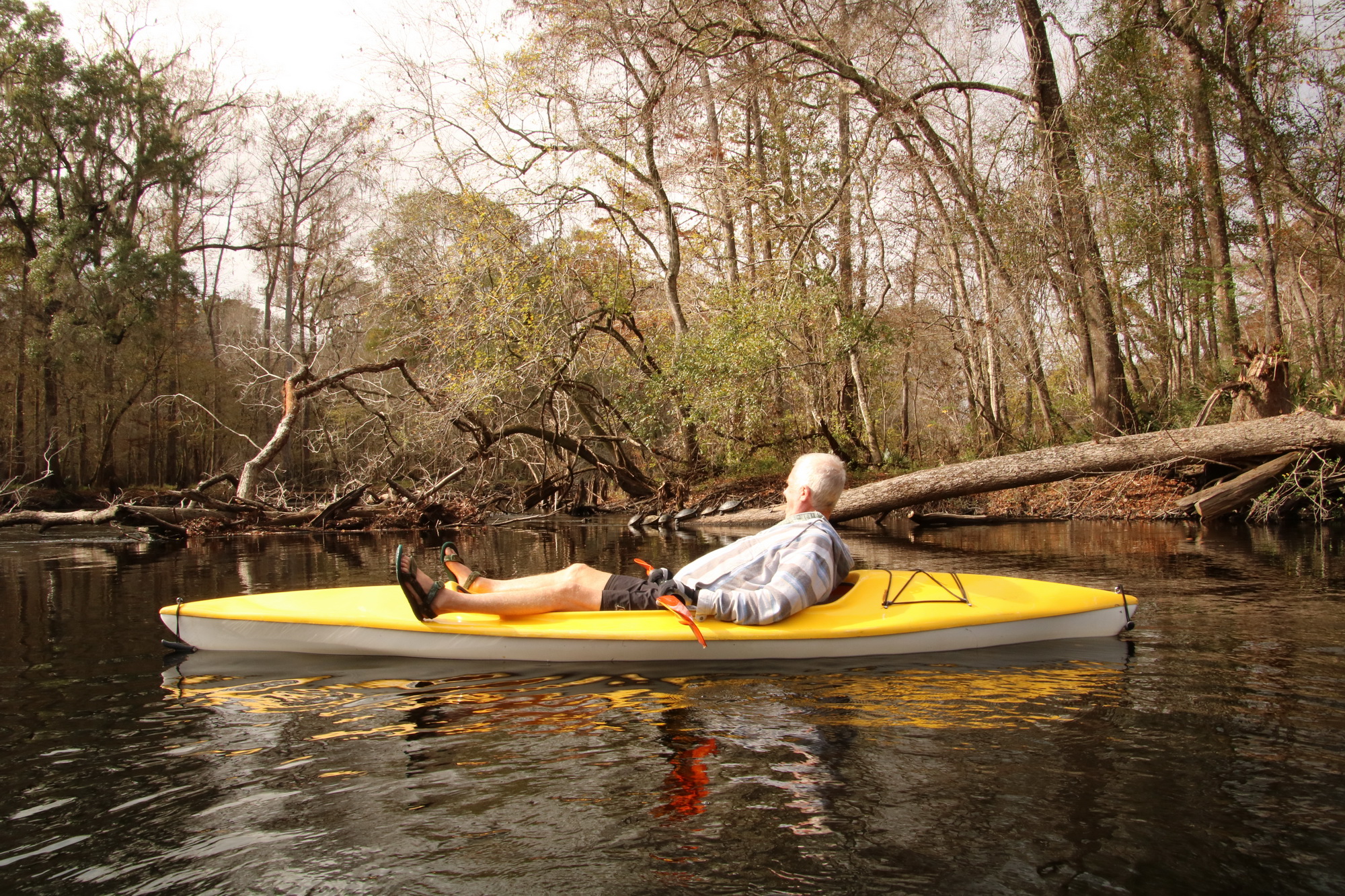
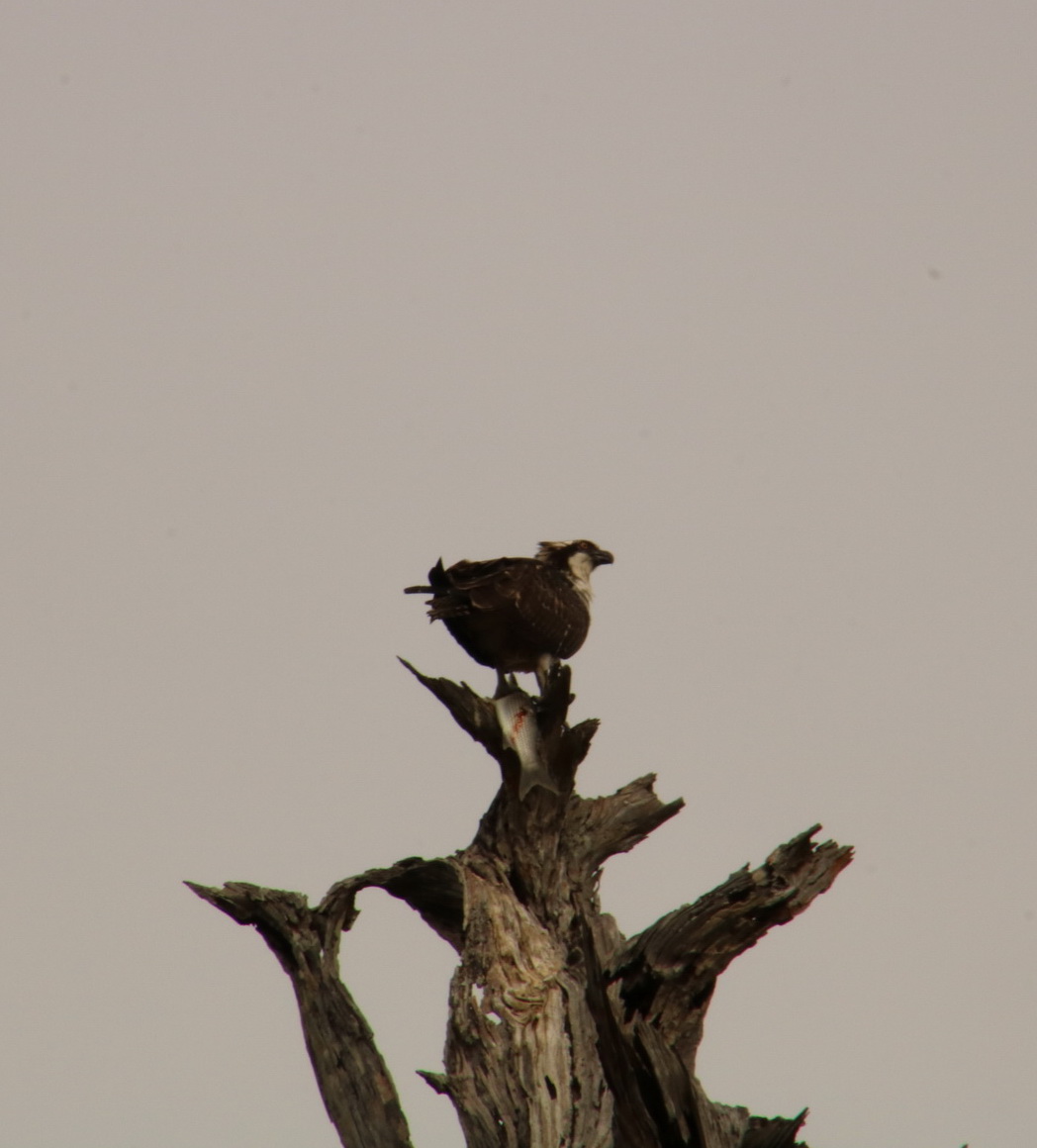
Further downstream we came to a huge old cypress tree, at least fifteen feet across its base, close to three feet in diameter above the base and rising fifty feet where, except for a single wispy branch, the top which was truncated from some long past storm. The tree now in decline was had perfectly round three in holes every five or six feet up its trunk which I thought was probably woodpecker nests. Since we had been on the river, I heard several times the thunk, thunk, thunk sound which I suspected was the larger pleated woodpecker as the smaller woodpeckers make a more rapid tapping sound. Within a minute of passing the woodpecker tree, a large, pleated woodpecker flew across the river some ten yards in front of us going into the woods on the opposite side of the river.
We continued gently floating downstream taking the left fork around Rum Island and returning to Blue Springs run and turned up it once again disturbing the same great blue heron that we disturbed when we begin our journey. Pulling our kayaks up on the sandy beach of the spring, I paused for a moment with a feeling of contentment.
Updated: 12-18-2021
